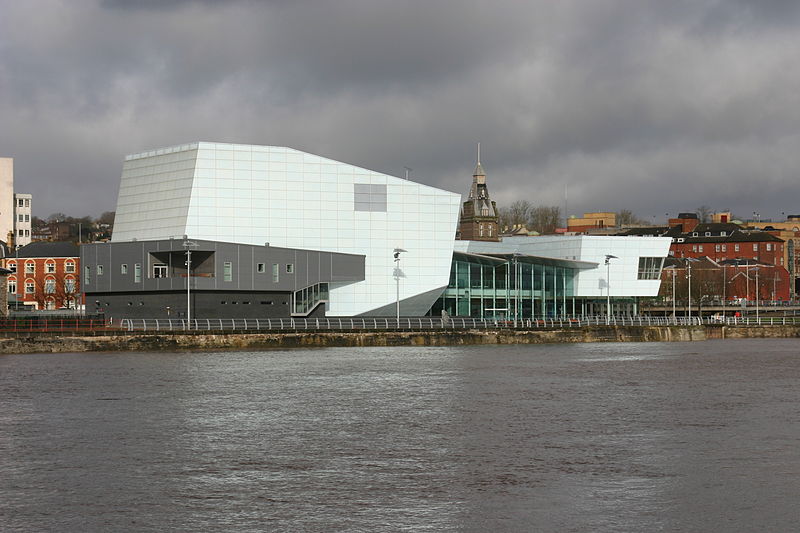Embedded under the standard YouTube licence
The Alhambra, Bradford, Rambert, 23 Oct 2015
It is often said that dance companies struggle to fill theatres outside London with new or less known works (see Arts Council England’s analysis of its investment in large-scale opera and ballet) but it all depends on the content. Rambert had no difficulty whatsoever in filling The Alhambra last Friday with Mark Baldwin's Dark Arteries, Shobana Jeyasingh’s Terra Incognita and Christopher Bruce's Rooster.
Dark Arteries opened with a brass band on stage. I don't suppose I was the only member of the audience to expect a march or hymn but that is not what we got. The music began softly and built up steadily. Lots of percussion and staccato. Girls in long blue dresses entered followed by the men also in blue. Complex, frenetic movements accompanying Gavin Higgins's score. The bandsmen were not the Rambert's regular musicians but Carlton Main Frickley Colliery Band. There were three moods in the dancing, Two lively ones at the beginning and end with some intricate duets in the middle. Performed by figures in red the duets were soft and poignant. Only later when I read the commentary on Rambert's website did I realize that Dark Arteries had been inspired by the miners' strike. I remember the strike as though it were yesterday. It is hard to think it occurred over half a lifetime ago.
Earlier in the year I saw Shobana Jeyasingh's La Bayadère - The Ninth Life at the Linbury. That work blended contemporary and Indian classical dance to a score by Gabriel Prokoviev. Terra Incognita was another collaboration by the same choreographer and composer. It also seemed to include what to my untrained eye were Indian dance movements. But it had quite a different feel to La Bayadère - The Ninth Life and perhaps it was intended as an antithesis. La Bayadère - The Ninth Life focussed on the arrival of Indian dancers in Paris and the sensation that they created in Europe which led in time to the Indian themed ballet. The title Terra Incognita (unexplored territory) suggests exploration. Maybe the arrival of Europeans in Asia and the far greater and more disruptive impact that they made on the recipient culture.
Visually the work was dramatic. Both men and women were in kilts - the men in mauve and the women in orangey brown. In my notebook I wrote "cats' eyes" which I think must relate to a scene change where there were reflections in the backdrop and the reminiscently feline dancing. I also wrote down "Dane Hurst". I can't remember why he impressed me more that day than he usually does but he did. That is not to say that the other dancers were not impressive for they were. Readers can get a flavour of Terra Incognita from this YouTube clip.
The triple bill was called Rooster - the title of the last of the works - and that was the treat of the show. This is a lovely period piece full of nostalgia for people like me (and looking around the theatre the bulk of the audience who grew up in the sixties). I remember those primary coloured shirts and jackets and mini-dresses. The piece starts with Little Red Rooster with the boys moving proudly like, well, the cock of the roost. It then proceeded to Lady Jane and the other Stones classics. I last saw Rooster at The Lowry just over a year ago and loved it then (see Rooster ................ :-) 4 Oct 2014). I think I enjoyed it even more last Friday. The work has been in Rambert's repertoire for over 20 years but it was not created for that company. Bruce choreographed it for the Geneva Grand Theatre Ballet which I mentioned last Sunday (see Geneva Nutcracker 25 Oct 2015).
On the 7 Nov 2015 Hannah Rudd will lead a workshop on Ruby Tuesday which is easily the most lyrical of the dances in the piece. Imagine dancing in that long, red dress! The workshiop takes place on the stage of Sadler's Wells Theatre between 10:00 and 12:00 and is open to intermediate to advanced dancers aged 16 or over. If only I were good enough! For those who are good enough to take part, here is the link to the booking page. The cost is £15.









